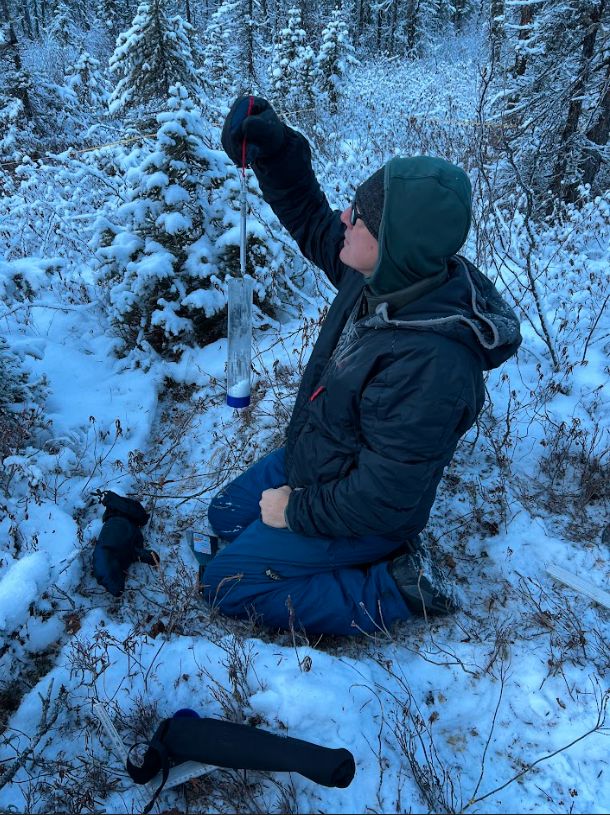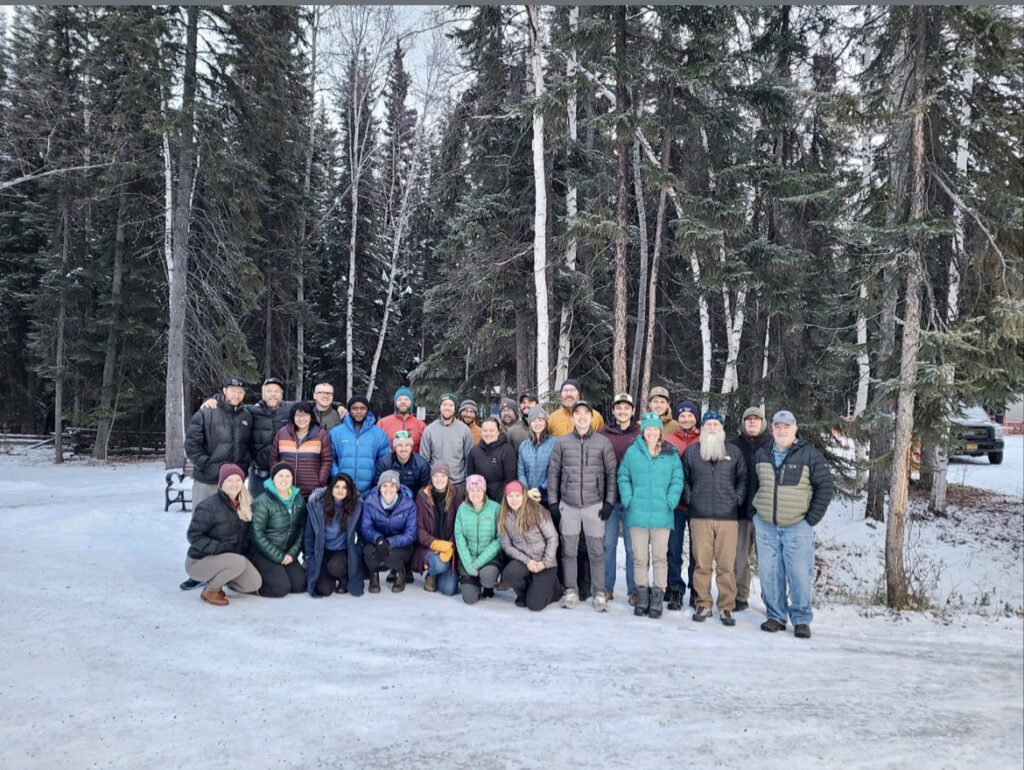Chuck Lewis, Geology PhD Student

Scientists in the Field
Driving up the Altiplano-Puna makes you feel, well, tiny. As the tops of the massive volcanoes built on ~60-70 km of crust come into reach the air also gets thin, and frankly, you’re far enough away from anywhere that you wonder if mapping these volcanic deposits matters at all. Then you run into a goat herder along a quebrada that hosts destroyed native villages destroyed during an eruption from Lascar.

My trip to the Andes as an undergrad in 2019 was the first time I left the USA for scientific motivations. My advisor, two other undergrads I’m proud to call friends, new colleagues (hi Nancy!), and I spent a few weeks in the field around the San Pedro de Atacama region. Unbeknownst to me, this trip would be the first time I put eyes on one of the volcanoes that would later encapsulate years of my life as PhD student.
In fact, there were a lot of firsts on this trip. It was the first time I put lines on a map in a ‘real’ scenario and the first time I would make colleagues outside of my Alma Mater. Importantly, it was the first time my advisor referred to me as a colleague—to a Chilean farmer along the Rio Salado just North of Valle del Arcoiris. In part due to the farmer’s respect and enthusiasm for our work, I realized in that moment that there’s a little more to constraining the timing of volcanic eruptions in foreign countries than there is at the surface. It reminded me of days past where my contribution to humanitarian work was a small brick in a much larger fortification that is built on collective efforts of others.
A Radioactive Chain

Most of my work over the last year has been focused on dating tiny crystals called zircon to understand the volcanic and magmatic history of the extinct Cerro Chaxas near San Pedro. Dating these crystals allows us to constrain the eruption age by the most recently formed crystal and to reconstruct the history of magma flux into the upper crust prior to eruption. In an attempt to achieve this, I’ve reformulated the method on how to best conduct uranium-lead analyses using Laser-Ablation-Inductively-Coupled-Plasma-Quadrupole-Mass-Spectrometry (LA-ICP-Q-MS). Said in another way, I will be the first person to describe a very specific data analysis and reduction scheme. By characterizing the data differently and using a bit of statistical thinking, we’ve managed to turn a method that is usually regarded as imprecise (relative to far more complicated instruments) into something more precise, with a slight increase in accuracy to boot! Not bad for a long-haired undereducated punk kid from southwest Florida if I do say so myself!
To my knowledge, the first written report regarding Chaxas was done by John Guest, a PhD committee member of my own advisor. Guest described Chaxas as a series of domes hosting an ‘explosion crater’. Chaxas eruptions wouldn’t be dated until the 1980s by my advisor, who described Chaxas more simply as a series of extrusive lava domes that later collapsed by gravity or subsequent eruption. At the time, the ages suggested Chaxas was active from eight to two million years ago. As it turns out, my work shows Chaxas was only active from two to five million years ago, and my current field observations suggest that the Chaxas domes were indeed partially collapsed by subsequent eruptions.
You probably notice a trend here: critique and refinement of old hypotheses as knowledge and techniques get updated. Indeed, it is likely that someone will come along and prove me wrong on half of what I put out there too. That’s how science works!
The Scientist’s Place in Society

My success as a scientist hinges on the complementary relationship between my work ethic and the ability of my advisors and mentors to steer me in the right direction. I can tell you I’m in good hands. As pointed out above, my primary advisor has a network that transcends national boundaries and indeed, has a direct influence on the success of students from underrepresented countries and communities. His students frequently go on to do service-oriented jobs (education) or work in the US geological survey for the volcano science center and thus directly impact the safety and livelihood of populations near active volcanoes. It sounds ridiculous, but during their PhDs they too simply described field relationships and dated some crystals and became someone who could do something good for society.
My other mentors can say the same, and I think they all would agree that the most impactful part of their job is bolstering society by helping people be better members of our world. If you want an example, you can stop by the Keck Lab, the Microprobe Lab, or any other lab this week and find a mentor going out of their way to facilitate someone’s growth and, hopefully, eventual prosperity.
But this isn’t a new phenomenon. Guest probably had a good mentor, and he mentored my advisor, who contributes largely to my growth as a scientist. If done correctly, the impact of the scientist to society is far more timeless than their latest age data or, for that matter, anything else that the next generation will prove wrong. A scientists most important impact is what they do for the next generation.













